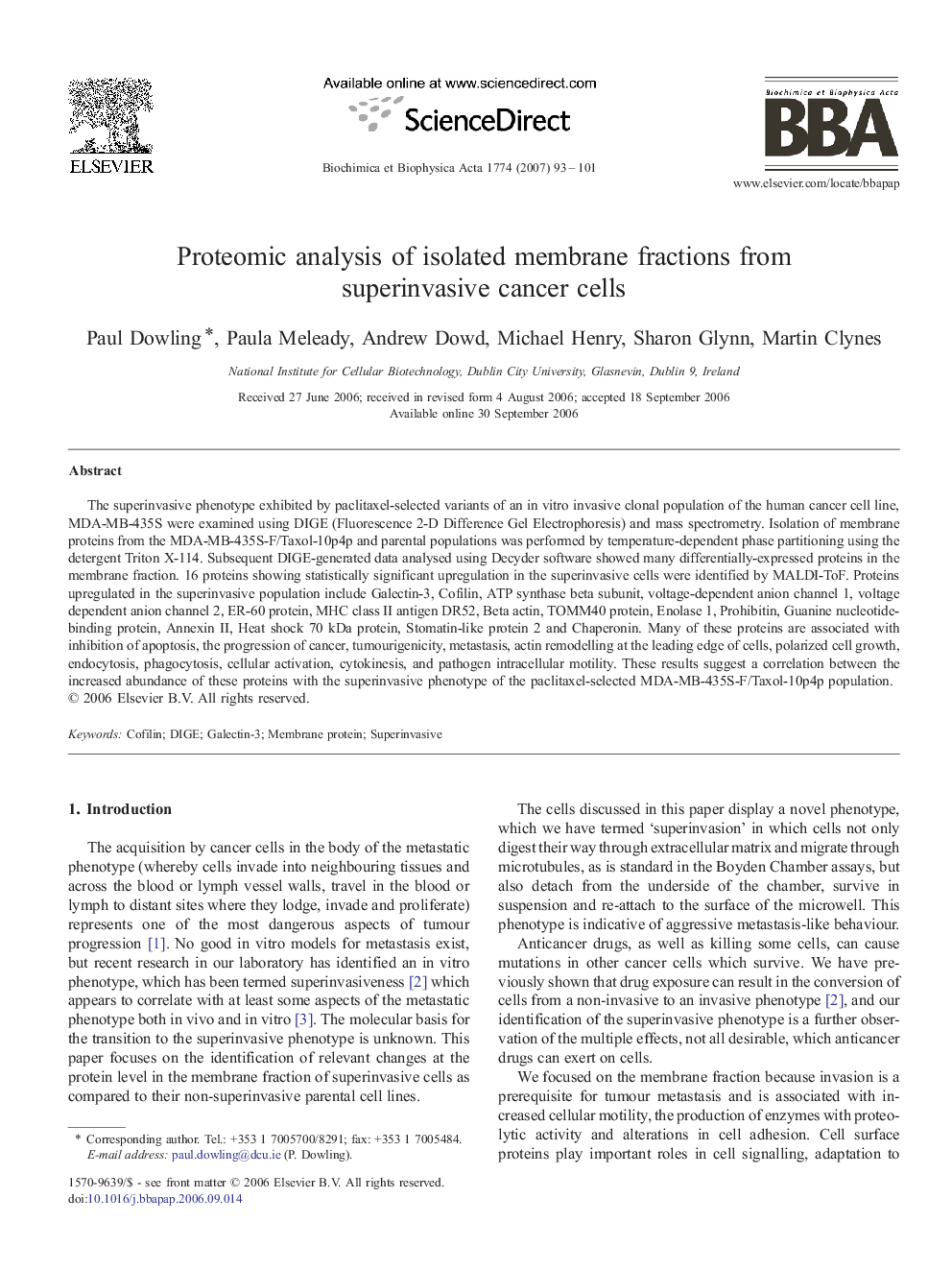| Article ID | Journal | Published Year | Pages | File Type |
|---|---|---|---|---|
| 1180781 | Biochimica et Biophysica Acta (BBA) - Proteins and Proteomics | 2007 | 9 Pages |
The superinvasive phenotype exhibited by paclitaxel-selected variants of an in vitro invasive clonal population of the human cancer cell line, MDA-MB-435S were examined using DIGE (Fluorescence 2-D Difference Gel Electrophoresis) and mass spectrometry. Isolation of membrane proteins from the MDA-MB-435S-F/Taxol-10p4p and parental populations was performed by temperature-dependent phase partitioning using the detergent Triton X-114. Subsequent DIGE-generated data analysed using Decyder software showed many differentially-expressed proteins in the membrane fraction. 16 proteins showing statistically significant upregulation in the superinvasive cells were identified by MALDI-ToF. Proteins upregulated in the superinvasive population include Galectin-3, Cofilin, ATP synthase beta subunit, voltage-dependent anion channel 1, voltage dependent anion channel 2, ER-60 protein, MHC class II antigen DR52, Beta actin, TOMM40 protein, Enolase 1, Prohibitin, Guanine nucleotide-binding protein, Annexin II, Heat shock 70 kDa protein, Stomatin-like protein 2 and Chaperonin. Many of these proteins are associated with inhibition of apoptosis, the progression of cancer, tumourigenicity, metastasis, actin remodelling at the leading edge of cells, polarized cell growth, endocytosis, phagocytosis, cellular activation, cytokinesis, and pathogen intracellular motility. These results suggest a correlation between the increased abundance of these proteins with the superinvasive phenotype of the paclitaxel-selected MDA-MB-435S-F/Taxol-10p4p population.
